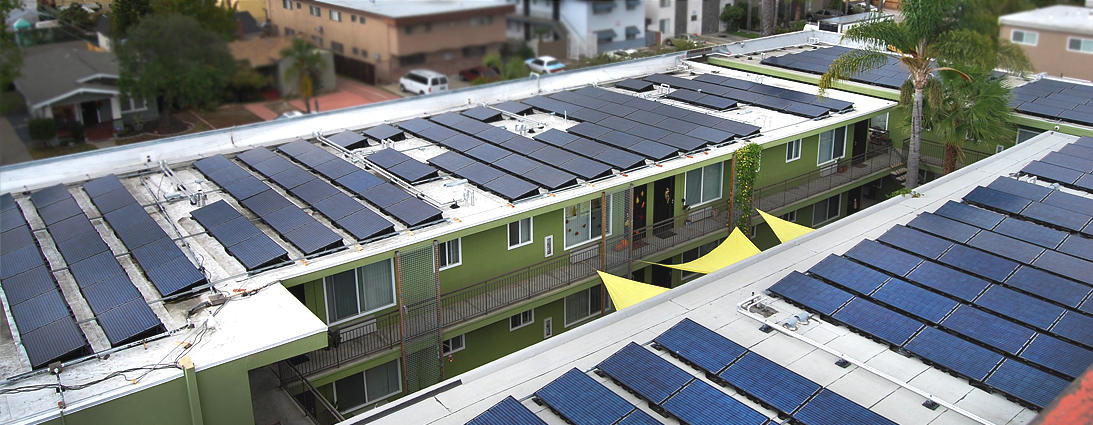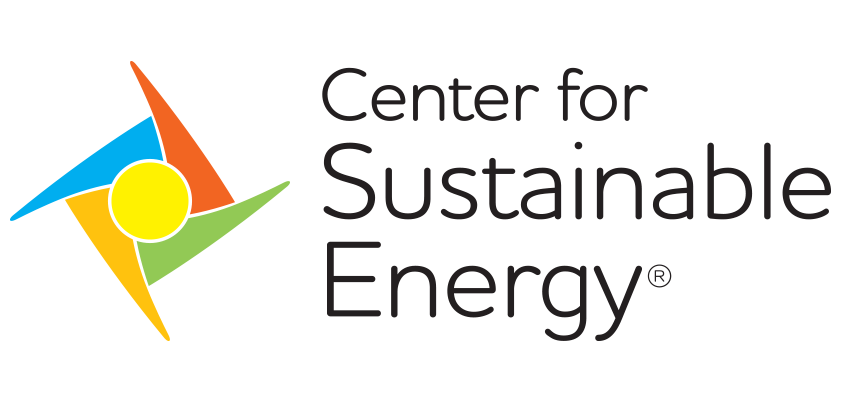

New $1B program benefits low-income renters and affordable housing providers
CSE is part of a team of leading clean energy and affordable housing organizations in California selected to run the state’s new Solar on Multifamily Affordable Housing (SOMAH) program. The California Public Utilities Commission (CPUC) initiative will provide up to $100 million annually for 10 years to fund solar energy installations on multifamily housing serving low-income and disadvantaged communities throughout the state to help assure equal access to solar for all California households.
The SOMAH Program Administrator team also includes the Association for Energy Affordability and GRID Alternatives, with implementation assistance from the California Housing Partnership Corporation, Rising Sun Energy Center and California Environmental Justice Alliance, among others.
The CPUC Energy Division selected this team based on their long-term experience in implementing statewide renewable energy and energy efficiency programs and working with affordable housing owners and tenants to maximize participation and community benefits.
“The idea behind SOMAH is to ensure equal access to solar energy for all California households, regardless of income levels,” said Benjamin Airth, CSE senior specialist in distributed energy resources. “Low-income renters pay a higher percentage of their income on utility bills, and improving access to solar provides savings, better housing security and a cleaner, healthier environment for all Californians.”
Largest investment of its kind
The SOMAH program was created by California Assembly Bill (AB) 693 introduced by Assembly Member Susan Eggman (District 13, Stockton). The largest investment of its kind in the nation, it provides up to $1 billion over the next decade from five of the state’s investor-owned utilities’ greenhouse gas cap-and-trade auction proceeds to fully subsidize 300 megawatts of solar photovoltaic (PV) panels on affordable multifamily properties throughout the state by 2030.
By comparison, over the past 10 years the former Multifamily Affordable Solar Housing (MASH) program resulted in about 34 megawatts of energy installed statewide. SOMAH will build on the many lessons learned from the MASH program, including tenant savings and workforce development.
“This is an incredible opportunity to put clean energy to work for whole communities,” said Cathleen Monahan, vice president of program administration at GRID Alternatives. “Each project will generate local clean energy and provide community members with paid workforce training opportunities to help them access jobs in California’s robust solar market.”
Thousands of properties qualify
To receive SOMAH incentives, the property must be operated as deed-restricted, low-income residential housing, then either be in a designated disadvantaged community or have at least 80 percent of its households with incomes at or below 60 percent of the area median income. The CPUC estimates more than 3,500 multifamily affordable properties across the state qualify, encompassing nearly 255,000 individual households.
AB 693 requires SOMAH projects to provide at least 51 percent of the clean energy produced from a PV system to tenants. It allows each household to receive a utility bill credit for a proportionate share of the energy generated by the building’s system under a utility tariff called virtual net energy metering.
“SOMAH will unlock the benefits of healthy, affordable energy for the underserved Californians who need it most,” said Stephanie Wang, policy director at the California Housing Partnership Corporation. “This program will also help to preserve affordable homes threatened by rising energy and housing costs.”
Assistance beyond solar
Technical assistance for property owners and residents is integrated into all SOMAH services, from the initial incentive application process through the postinstallation period during which the program will continue to provide long-term support with billing, monitoring and operations necessary to ensure system performance and energy savings.
“We also want property owners and operators to develop an understanding of other energy programs and options available for technical assistance, including energy efficiency, benchmarking, energy storage and additional improvements related to energy use, such as electric vehicle charging,” said Andrew Brooks, director of West Coast operations at the Association for Energy Affordability.
The SOMAH program is expected to launch in late 2018. In the interim, the SOMAH team will establish program guidelines, a handbook for property owners and contractors, training programs and a web-based bidding portal.
For more information and to sign up for SOMAH program email updates, visit CalSOMAH.org.

